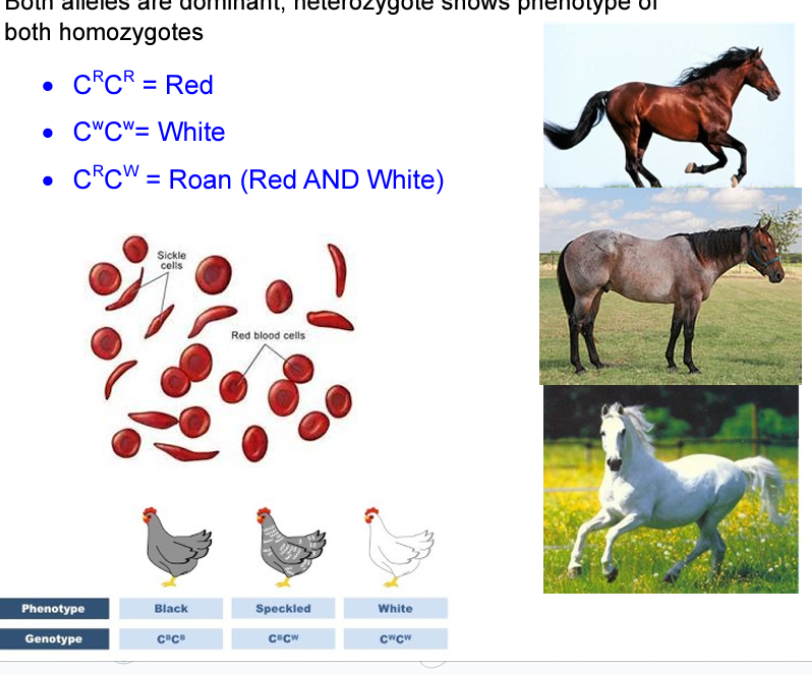bio unit 5 (heredity)
1/46
Earn XP
Description and Tags
Name | Mastery | Learn | Test | Matching | Spaced |
|---|
No study sessions yet.
47 Terms
interphase
dna replicates in diploid parent cell (results in sister chromatids)
meiosis i (reduction division)
homologous chromosomes split (1 diploid cell to 2 haploid cells)
sister chromatid
identical copy of a chromosome
centromere
attaches sister chromatids
meiosis ii
sister chromatids split (4 haploid cells)
cell cycle
interphase (g1, s, g2), mitosis, cytokinesis
g1 (gap 1)
cell grows larger, copies organelles
interphase
dna and organelles are copied, checkpoints are there to make sure something doesn’t go wrong (90% of cell life spent in interphase)
g1, s, g2
g0 phase
cell cycle arrest; when a cell is no longer dividing nor preparing to divide
s phase
copies dna, duplicates centrosomes
centrosome
organizes microtubules
g2 phase (gap 2)
cell grows more, makes more organelles, rearranges contents to prepare for mitosis
mitosis
PMAT (prophase, metaphase, anaphase, telophase) cell division
prophase
nuclear envelope breaks down, chromosomes condense, and spindle begins to form
metaphase
spindle fibers move chromosomes to middle (sister chromatids attached still), centrosomes move to poles
anaphase
sister chromatids separate and move towards poles, cell elongates
telophase
2 nuclei form, chromosomes decondense, mitosis is complete
cytokinesis
cytoplasm separates (in animals, cleavage furrow, in plants, cell plate)
growth factor
ligand that tells cell to start cell cycle
density-dependent inhibition
cells only divide if there are less nearby cells (e.g. in damaged tissue)
cyclins
bind to cyclin dependent kinases, which phosphorylate target proteins that allow for cell cycle progression
prophase 1
crossing over happens
independent assortment
chromosomes go into one cell or another (meiosis) randomly, contributes to genetic diversity
always happens when genes are on separate chromosomes (b and c)
can happen when genes are far apart enough on the same chromo to cross over
does not happen w/ linked genes (close together on chromo)
genotypic ratio
ex: AA:Aa:aa
phenotypic ratio
dominant:recessive trait
mendel’s law of segregation
offspring get one allele from each parent (contributes to genetic diversity)
test cross
crossing a recessive phenotype with a dominant phenotype to find the latter’s genotype
probability rules
use and rule for each gene in a cross w/ multiple (indep. assortment)
or rule for more than one possibility
codominance
hetero has phenotype of both homos (black + white = speckeled)

incomplete dominance
hetero is a blend of the two homos (red + white = pink)
epistasis
one gene is a light switch for another (one turns on pigment and the other decides the pigment)
polygenic trait
trait controlled by many genes (e.g skin color)
sex linkage
trait carried by X chromosome
gene linkage
genes located on same chromo (some gametes more likely than others, does not sort as expected by indep. assortment)
multifactorial
trait that is combination of genes and env (heart health is genes + smoking and stuff)
non-nuclear inheritance (mitochondrial DNA)
circular like in bacteria, only mother passes on to ALL children
chi square
if less than critical value (FTR)
if greater than critical value (reject null)
df = outcomes -1 (p = 0.05)
if we expect non mendelian inheritance, then not all of the exp values would be =
autosomal recessive pedigree
m and f both affected equally
can skip generations (carrier)
two affected individuals (homo rec) will have all affected offspring
autosomal dominant pedigree
m and f equal
trait can’t skip generations
2 affected parents can have an unaffected kid (hetero)
x linked recessive
m affected more than f
f can only be affected if dad is also affected
x linked dominant
more f affected (usually lethal in m)
if not lethal, dad will pass trait to daughters but not sons
nondisjunction
homologs or sister chromatids don’t separate properly during cell division
aneuploidy
extra or missing chromos
deletion
loss of part of chromo
duplication
extra copy of part of chromo
inversion
reverses dir of part of chromo
translocation
part of one attaches to another chromo